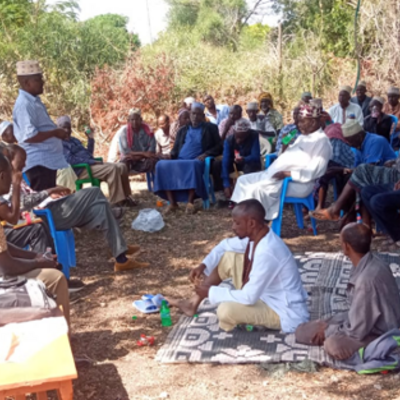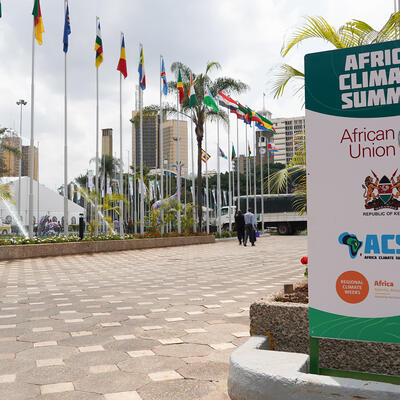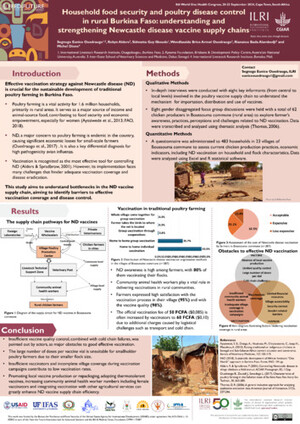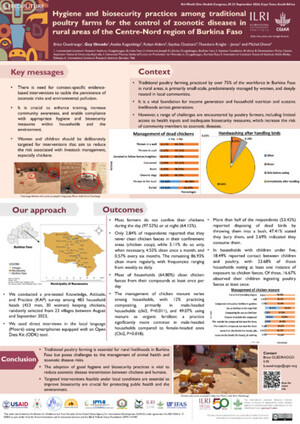
Gender in delivery of contagious bovine pleuropneumonia vaccine: Lessons from Kenya
Livestock farmers in Africa face serious challenges posed by pests and diseases which significantly influence productivity of their animals and greatly threaten their livelihoods. One of the most important diseases for cattle farmers in the continent is the contagious bovine pleuropneumonia (CBPP), also called the cattle lung disease. It is a highly contagious disease of cattle and water buffaloes caused by a bacterium, and can cause high mortalities if not addressed in time. The disease is mainly spread through direct contact with cough droplets and is exacerbated by crowding of animals.
The main methods of CBPP control include movement control, stamping out by slaughter, vaccination, and treatment. Movement control is considered to be logistically difficult to apply due to socio-cultural and trade practices, stamping out with or without compensation is considered too costly, and treatment with antibiotics has officially been discouraged because empirical evidence shows that these only alleviate the clinical signs, but does not prevent the spread of infection, and may favour the creation of chronic carriers. This leaves vaccination as the only viable option in controlling the cattle lung disease.
Scientists at the International Livestock Research Institute (ILRI) carried out a socioeconomic study, to answer several questions on the delivery of the CBPP vaccine in North Eastern Kenya.
What delivery mechanisms exist for CBPP vaccine and how does its adoption by men and women compare?
 The study’s goal was to generate evidence on the status of delivery of the CBPP vaccine currently in use and the potential of adoption, by end users, according to its accessibility, affordability and acceptability accounts given by women and men cattle owners.
The study’s goal was to generate evidence on the status of delivery of the CBPP vaccine currently in use and the potential of adoption, by end users, according to its accessibility, affordability and acceptability accounts given by women and men cattle owners.
Informed by the findings of the study, relevant stakeholders will be able to put in place more efficient and effective delivery mechanisms for the vaccine under development. Second, the vaccine developers can factor-in many characteristics while prioritizing the most desirable ones specified by women and men as key attributes of the new vaccine. Third, using the findings from the willingness-to-pay adoption study, the vaccine developed can be sold at a price not exceeding the average stated price by those willing to pay for it. The results from this study will also provide information and direction on the potential for commercialization of this vaccine for sustainable delivery and use.
The study established that already, a private public vaccine delivery hybrid model exists, whereby most cattle owning households purchase vaccines and veterinary paraprofessionals vaccinate their cattle because there is a shortage of veterinarians in the region. The greatest opportunity that exists for the current CBPP vaccine delivery is that it is affordable and desired. Men are willing to pay significantly more money, because they own greater cattle wealth, than women.
Gendered differences in knowledge of the disease present opportunities for preventing its spread
A recently published paper, based on the study findings, reports that gendered division of cattle associated roles and responsibilities has produced different and complementary types of knowledge on CBPP by women and men.
Women appeared to know more about the clinical signs of early CBPP manifested by individual animals, whereas men appeared to know more about signs associated with the latter stages of the disease and manifest in the herd. Recognition of this difference in knowledge and its utilization – by requesting women to alert the community when they see early signs of CBPP – can contribute to prevention of spread of disease.
The study recommends that a strategy whereby women alert the community when they see early signs of disease leading to quarantine of suspect animals and herds, followed by ring vaccination to protect animals in neighbouring herds would contain the disease and prevent its spread. Such action, the authors argue, would prevent socio-economic consequences of herd and trade losses associated with widespread CBPP outbreaks.
Feminization of pastoralism is ongoing in this community rendering women more relevant in cattle production than before because young men are migrating to urban areas in search of higher education and, or alternative livelihood sources. In spite of this, ownership of cattle by women remains low even for women from female headed households.
To this end, the study recommends that women be included as relevant stakeholders in the cattle industry in North Eastern Kenya.
Download the paper here
















